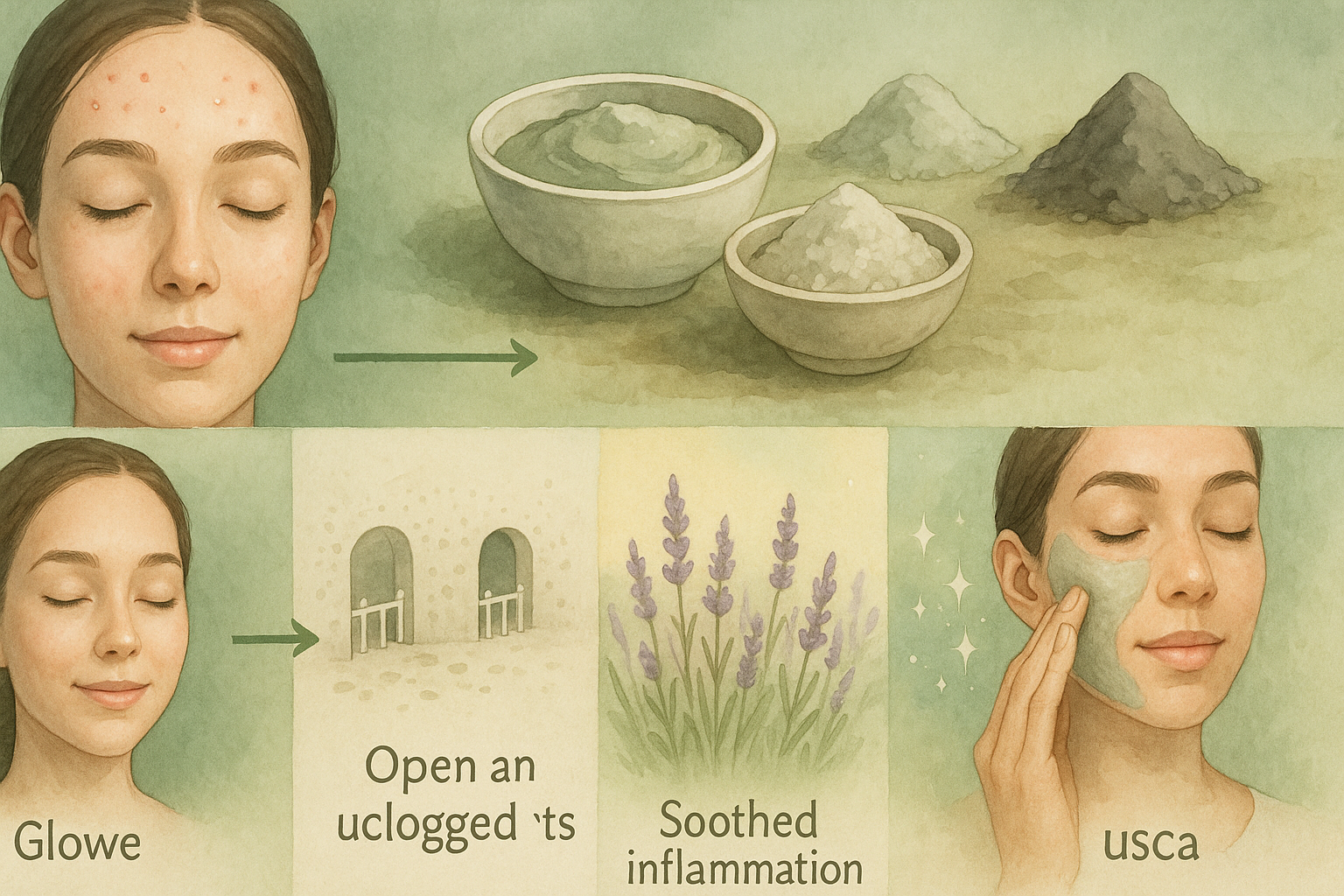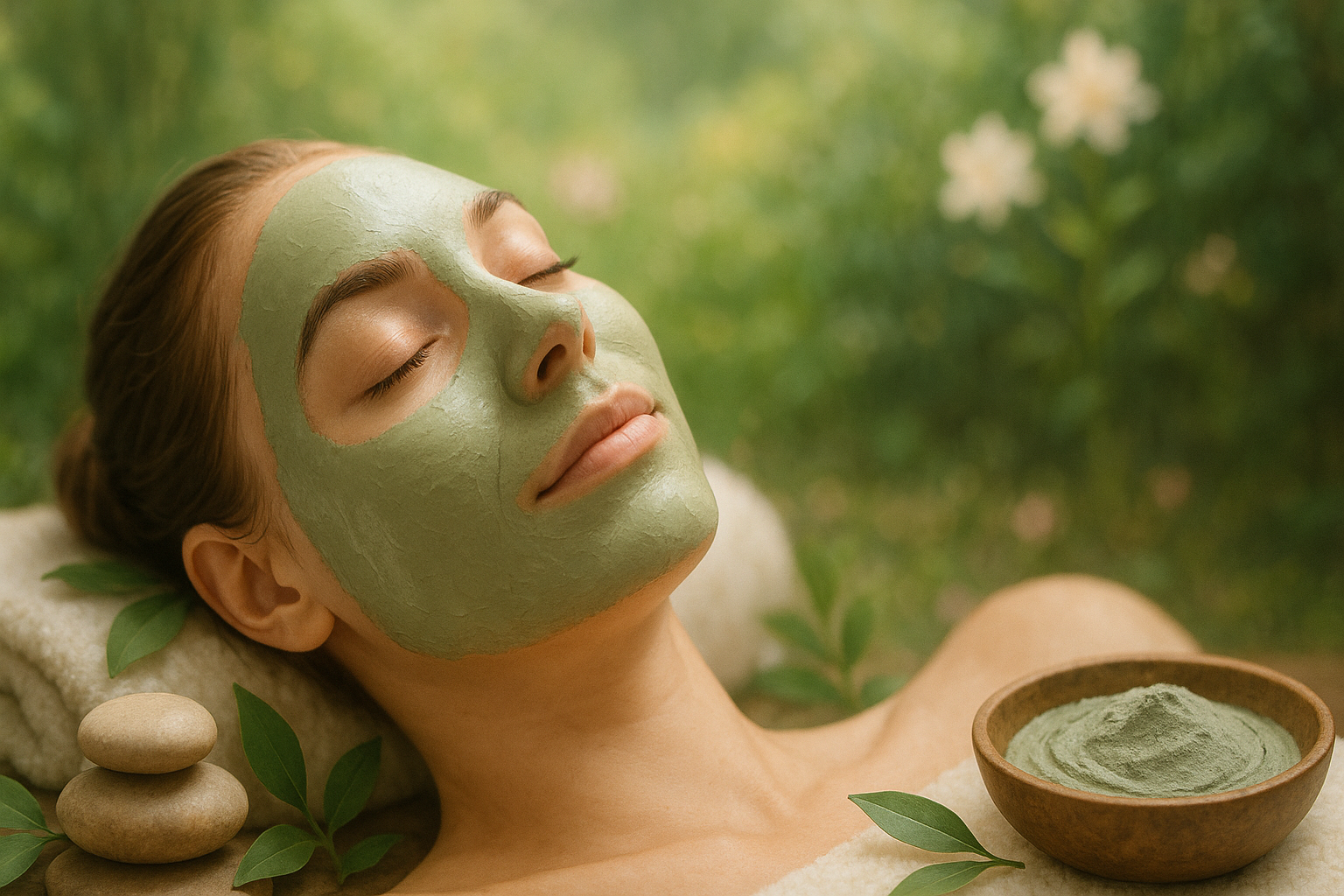How to Cure Acne: The Benefits of Clay Masks
Acne can be a stubborn and frustrating skin condition that affects millions worldwide. While there are countless treatments available, one natural remedy that has stood the test of time is the clay mask. In this blog post, we’ll explore how clay masks can help cure acne and improve your skin health. Let’s dive in! 🧖♀️
Table of Contents
1. Introduction
2. Understanding Acne
3. What Are Clay Masks?
4. Benefits of Clay Masks for Acne
4.1. Absorbs Excess Oil
4.2. Unclogs Pores
4.3. Soothes Inflammation
4.4. Provides Essential Minerals
5. How to Use Clay Masks Effectively
6. DIY Clay Mask Recipes
7. Conclusion
8. FAQs

Introduction
Dealing with acne can be a challenging journey filled with trial and error. From over-the-counter creams to prescription medications, the options are endless but not always effective. If you’re looking for a natural alternative that can help manage breakouts, clay masks might be your answer. With a rich history in skincare, clay masks offer numerous benefits that target acne at its core. Let’s explore how these earthy wonders work their magic!
Understanding Acne
Acne occurs when hair follicles become clogged with oil and dead skin cells, leading to pimples, blackheads, and whiteheads. Factors like hormonal changes, diet, stress, and genetics can exacerbate the condition. To effectively treat acne, it’s crucial to address excess oil, bacteria, and inflammation—all areas where clay masks excel.

What Are Clay Masks?
Clay masks are topical treatments made from natural clays like bentonite, kaolin, and French green clay. These clays are known for their absorbent properties and have been used in skincare for centuries. When applied to the skin, they work by drawing out impurities and providing a deep cleanse, making them ideal for acne-prone skin.
Benefits of Clay Masks for Acne
4.1. Absorbs Excess Oil
One of the primary causes of acne is excess sebum production, which can lead to clogged pores. Clay masks are excellent at absorbing oil, helping to balance the skin’s natural oils without stripping it of moisture. This oil-absorbing property makes clay masks a go-to treatment for oily and acne-prone skin. 🛡️
4.2. Unclogs Pores
Clay masks have the ability to penetrate deep into the skin, removing dirt, bacteria, and dead skin cells from the pores. By unclogging pores, they reduce the likelihood of breakouts and improve the overall texture of your skin. Say goodbye to blackheads and hello to a smoother complexion! ✨
4.3. Soothes Inflammation
Acne is often accompanied by redness and swelling caused by inflammation. Clay masks, particularly those containing ingredients like aloe vera or chamomile, have soothing properties that can calm irritated skin. Regular use can lead to a more even skin tone and reduced inflammation. 🌿
4.4. Provides Essential Minerals
Clays are rich in minerals such as silica, calcium, magnesium, and iron, which are beneficial for skin health. These minerals help to nourish and strengthen the skin, promoting repair and regeneration. Incorporating clay masks into your skincare routine can lead to healthier and more resilient skin. 💪
How to Use Clay Masks Effectively
To get the most out of your clay mask, follow these simple steps:
1. Cleanse your face thoroughly to remove makeup and impurities.
2. Apply a thin, even layer of the clay mask, avoiding the eye and lip areas.
3. Allow the mask to dry for the recommended time (usually 10-15 minutes).
4. Rinse off with lukewarm water and pat your face dry with a clean towel.
5. Follow up with a moisturizer to keep your skin hydrated.
For best results, use a clay mask 1-2 times a week, depending on your skin’s needs.
DIY Clay Mask Recipes
If you enjoy DIY skincare, here are a couple of simple clay mask recipes you can try at home:
1. Bentonite Clay and Apple Cider Vinegar Mask
Mix equal parts bentonite clay and apple cider vinegar to form a paste. Apply to your face and let it sit for 10 minutes before rinsing off. This mask is great for oily skin.
2. Kaolin Clay and Honey Mask
Combine 1 tablespoon of kaolin clay with 1 tablespoon of honey. Apply the mixture to your face, leave it on for 15 minutes, and rinse off. This mask is gentle and suitable for sensitive skin.
Conclusion
Clay masks are a fantastic natural remedy for acne-prone skin. Their ability to absorb excess oil, unclog pores, soothe inflammation, and provide essential minerals makes them an invaluable addition to any skincare routine. Whether you choose to purchase a pre-made product or whip up a DIY version at home, your skin will thank you for the extra TLC. 🌟
FAQs
Q: Can clay masks be used on sensitive skin?
A: Yes, clay masks can be used on sensitive skin. Opt for gentler clays like kaolin and avoid leaving the mask on for too long.
Q: How often should I use a clay mask?
A: It’s generally recommended to use a clay mask 1-2 times a week, depending on your skin type and needs.
Q: Can I use a clay mask on other parts of my body?
A: Absolutely! Clay masks can be applied to areas like the back or chest if you experience acne in those regions.
Remember, consistency is key when it comes to skincare. Give clay masks a try and enjoy the journey to clearer, healthier skin! 😊